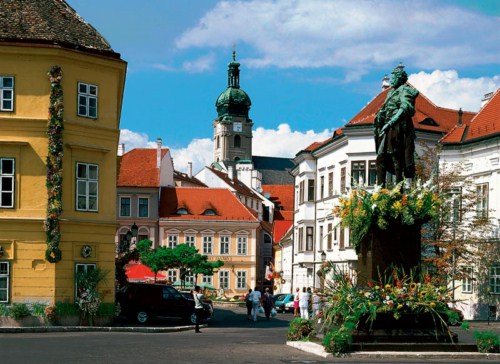
We move today to Gyor, a beautiful and charming Hungarian city, the third largest in the country, located about 130 kilometers west of Budapest, very close to the border with Slovakia. It is precisely much closer to Bratislava, Slovak capital (70 kilometers) than the Hungarian capital itself.
A city that has quite a few interesting Baroque buildings. Its historic center stretches along the Raba River, a tributary of the Danube. A walk along its shore will take you to see, nestled on top of a hill, the Bishop's Castle. It really is not a very large historical center, so it can be explored perfectly on foot.
You will go through the Szechenyi Ter, the main square of the city and a true meeting point for tourists and locals. From here numerous alleys and small squares start that lead you to the castle. The best of all is that practically the entire historic center is pedestrianized, so it is very comfortable to visit.
This main square presents in its center the famous Column of the Blessed Virgin and Church of San Ignacio. Built in 1641 in the Baroque style, for my taste it is undoubtedly the most beautiful church in the city.
Imagine the typical Baroque city, with its very striking pastel-colored buildings, most of them built between the XNUMXth and XNUMXth centuries. If you arrive by train, as soon as you leave the station you will find the Varoshaza Square, where the imposing City Hall is located, which, at night, fully illuminated, is a marvel. It was built at the end of the XNUMXth century in the neo-baroque style.
Another great aspect to highlight about Gyor is that it is a city that is very well preserved, which makes a walk through it take us back to the seventeenth and eighteenth centuries.
Possibly a few hours are enough to know and visit the city. If you are touring Eastern Europe, remember Gyor, a beautiful corner of which you will take good memories.
Photo Via Wikipedia